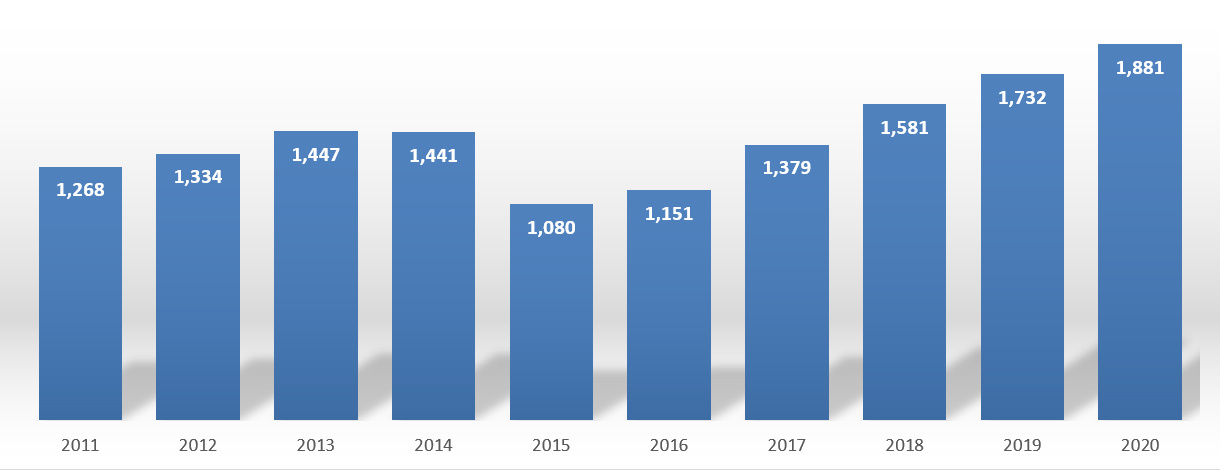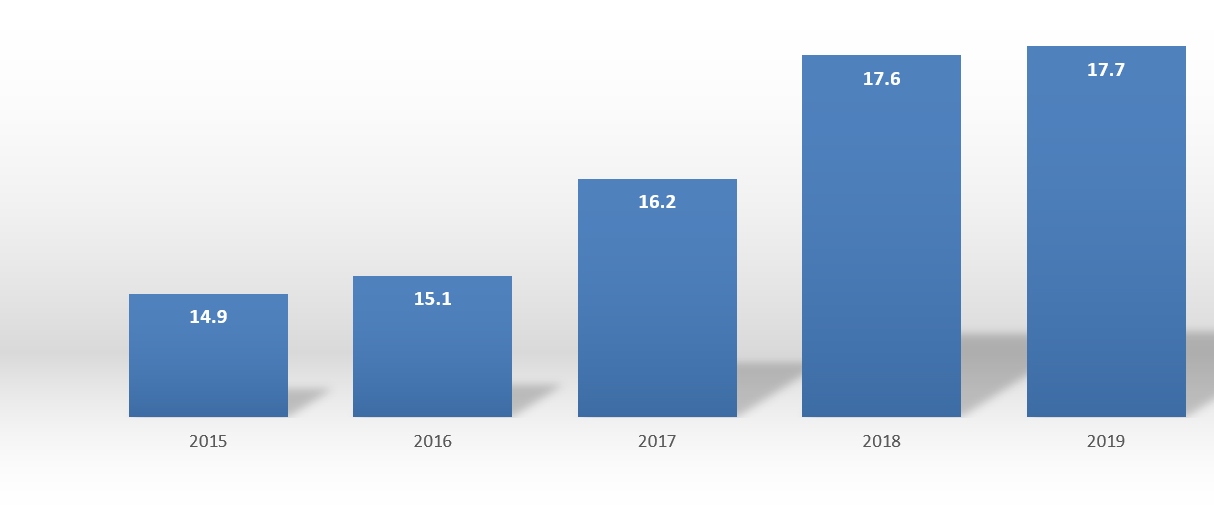Roman Gotsiridze: “Foreign remittances in 2020 increased by 9% as compared to the previous year and reached a record high of USD 1.88 billion. This is precisely as much as the foreign direct investments in the same period. This is the country’s gross domestic product for almost one year.”
Verdict: FactCheck concludes that Roman Gotsiridze’s statement is TRUE.
Resume:
Foreign remittances in 2020 amounted to USD 1.88 billion which was 9% more as compared to 2019 figure. At the same time, the total foreign remittances of the last ten years constitute USD 14.3 billion whilst the sum of foreign direct investments is USD 13.6 billion. The volume of foreign direct investments taking all four quarters together is still unknown, although it is unlikely that the FDI in the fourth quarter will reach USD 700 million. Therefore, in a ten year-perspective, the FDI figure is at least less as compared to foreign remittances and although Roman Gotsiridze’s statement is inaccurate in this respect, it still adds weight to the spirit of the statement.
Generally, a comparison of FDI’s s ten-year cumulative figure to the GDP’s figure of a single year contains elements of speculation because inflation which comprises the increases in price levels and exchange rates over the years. However, Roman Gotsiridze limits himself to general analysis only and names figures to provide a general understanding for the readers of his post. In 2015-2019, the nominal GDP in USD was fluctuating within the margins of USD 14.9-17.7 billion.
Analysis
United National Movement political party member, Roman Gotsiridze, published the following post on his Facebook page: “Foreign remittances in 2020 increased by 9% as compared to the previous year and reached a record high of USD 1.88 billion. This is precisely as much as the foreign direct investments in the same period. This is the country’s gross domestic product for almost a year.”
Foreign remittances to Georgia comprise the money transferred to the country mostly by emigrants working abroad. The National Bank’s data indicate the volume of remittances from Georgia and vice-versa through electronic money transfer systems (Western Union, Money Gram, Anelik, Unistream and others) operating in Georgia’s banking system. According to the National Bank’s 2020 report, foreign remittances to Georgia increased by 8% and reached USD 1.88 billion. Russia and Italy are leading sources of remittances. The top ten countries are as follows:
Table 1: Top 10 Sources of Foreign Remittances, 2020

Source: National Bank of Georgia
In addition, the total sum of foreign remittances in the past ten years is indeed USD 14.3 billion according to the National Bank’s data. Therefore, this figure, named by Roman Gotsiridze is accurate.
Graph 1: Foreign Remittances in 2011-2020

Source: National Bank of Georgia
Roman Gotsiridze also mentioned in his statement that foreign direct investments (FDI) for the last ten years equal the amount of foreign remittances and constitute USD 14.3 billion.
According to the National Statistics Office of Georgia, the total amount of FDI in the last ten years was USD 13.6 billion (based on the first three quarters of 2020). Over the past ten years, foreign remittances have been USD 700 million more as compared to the combined FDI of this same period. However, the figures of the last quarter of 2020 have not yet been updated and the gap between the FDI and foreign remittances may still narrow down. Therefore, the total sum of foreign remittances does exceed the total sum of foreign investments.
Graph 2: Foreign Direct Investments (FDI) in 2011-2020

Source: National Statistics Office of Georgia
Roman Gotsiridze also mentions in his statement that the sum of foreign remittances in the last ten years equals Georgia’s GDP in USD for a single year. According to the National Statistics Office of Georgia, Georgia’s nominal GDP in 2019 was USD 17.7 billion.
Graph 3: Nominal GDP in 2015-2019, USD Billion

Source: National Statistics Office of Georgia
Generally, a comparison of FDI’s ten-year cumulative figure to the GDP’s figure of a single year contains elements of speculation because inflation which comprises the increases in price levels and exchange rates over the years. However, Roman Gotsiridze limits himself to a general analysis only and names figures to provide a general understanding for the readers of his post. In 2015-2019, the nominal GDP in USD was fluctuating within the margins of USD 14.9-17.7 billion.








